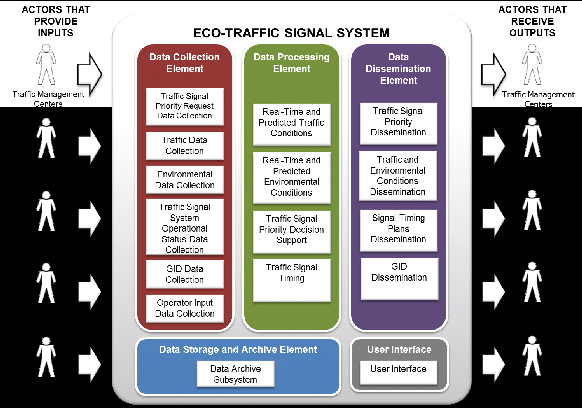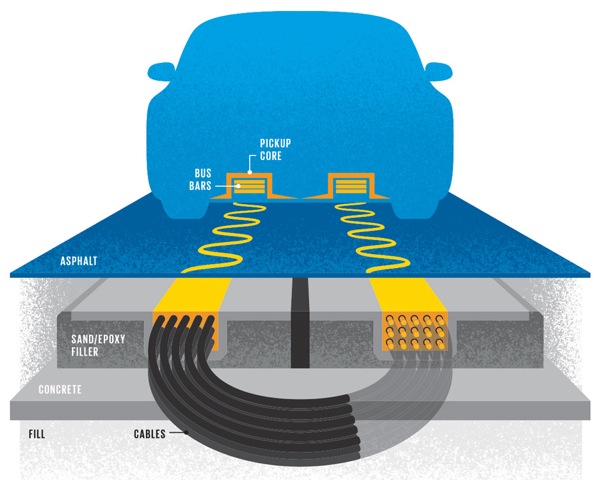
Road Network Operations
& Intelligent Transport Systems
A guide for practitioners!

Road Network Operations
& Intelligent Transport Systems
A guide for practitioners!
The global demographic and environmental challenges are forcing us to consider innovative and sometimes radical approaches to travel and transport – making best use of information, new technologies and applications.
The expectation is that accurate and dependable information will allow transport users to choose travel options that match their needs, modify trip departure times, or even reschedule events to take advantage of better travel conditions and travel times. Putting information in the hands of consumers is critical in managing metropolitan-wide traffic volumes and congestion. The more pressure that can be taken off congested periods and locations, the quicker it will clear and allow traffic to flow. Using data analytics, a clear and complete view of the traffic conditions can be obtained helping to optimise its management.
The need to achieve a more environmentally sustainable and efficient transport system is driving developments to achieve reduced carbon emission targets and make better use of road capacity.
Social media is transforming the way that business is carried out. The message to ITS practitioners (from both the public and private sectors) is to harness its power.
Manage your relationship with your customers – the road users:
Crowd source vital information:
Potential Outcomes:
Social media are already proving to be an effective way of acquiring and sharing information, in real-time, on disruption to transport networks and alternative travel options. Facebook and Twitter come into their own in these situations – for example, the 2010 volcanic ash cloud across Europe which brought large parts of the aviation industry to a halt and during the heavy monsoon rains in Mumbai in 2014 which flooded the roads and metro network. In Queensland and Victoria (Australia) in 2010-11, community-initiated Facebook groups - sourcing their information from road and weather authorities, police and other emergency services – provided vital intelligence about road closures and flooding.
Social media also offers a free platform to let the world know who you are and what you do – to establish your brand and manage your profile and relationship with customers. A presence in social media enables you to manage a constructive dialogue fans and critics alike. Failure to engage can leave organisations without a voice to counter criticism.
According to a 2012 American Association of State Highway & Transportation Officials (AASHTO) Social Media Survey, Twitter remains the most-used social media outreach tool for State Departments for Transportation (DOTs) in the USA - with 88% (37 of 42) saying they use Twitter in some way to share information. In 2011, only 31 out of 38 agencies reported using Twitter and in 2010 only 26 agencies of 32 surveyed reported using the tool as part of their public engagement strategy. This shows that some public agencies have still to recognise the value of social media for communicating with road users.
To get the most out of any social media activities, a strategy for engagement is needed: who to target, what are the messages, and how best to do it? The strategy needs to be kept under review to take account of new media and technology and changes in business priorities. As social networks multiply and develop new functionalities it is unlikely that road authorities and road managers will be early adopters to help deliver their core business. They are more likely to wait until there is some stability in market usage to determine which media are the most appropriate platforms for them. They will then need a knowledge of the profile and preferences of their customers (the road users) to help identify which social networks and technology platforms are likely to be most useful to target.
Engagement with social media needs to be properly resourced. Among the challenges that public agencies face, are staffing, training, capacity building and engagement policy. Some agencies are expanding their communications teams whilst others expect existing teams to manage their growing social media footprint whilst also maintaining more traditional outreach activities.
Eco-mobility is a general term to cover vehicle technologies, driving techniques, traffic management and other policies and measures that support more environmentally friendly transport of people and freight. Many of the emerging concepts make use of ITS to achieve carbon reduction targets through reduced air pollution and more efficient energy use. Promising developments are in smoothing traffic signal operations and lane management to optimise traffic throughput, alongside regulatory and policy instruments to help travellers to make “green” travel choices and reduce their environmental impact.
This ITS application is similar to current traffic signal systems but the objective is to optimise the performance of traffic signals for the environment. Data from vehicles (vehicle location, speed, and emissions data) is obtained using connected vehicle technologies. This is processed to develop signal timing strategies aimed at minimising stop/start conditions thereby reducing fuel consumption and overall emissions at the intersection, along a corridor, or for a region.
This ITS application, illustrated in the figure below allows public transport or freight vehicles to request signal priority at an intersection taking account of vehicle’s location, speed, type (such as hybrid or alternative fuelled vehicles). It assess associated emission data to determine whether priority should be granted.

This approach is similar to High Occupancy Vehicle lanes (HOV lanes), with dedicated freeway lanes optimised to encourage use by vehicles operating in eco-friendly ways. The lanes may support variable speed limits, eco-cooperative adaptive cruise control and vehicle platooning applications, and wireless inductive/resonance charging infrastructure embedded in the roadway.
Electro-Mobility, also known as eMobility, refers to clean and efficient transport, using electric road vehicles powered either by batteries or by hydrogen fuel cells. Some may have an auxiliary internal combustion engine (hybrid) for extended use or to maintain the battery’s charge. Battery powered electric vehicles are gaining in importance with automotive manufacturers investing in the technology. Those leading the innovation range from small two-man teams to major multinational corporations and automotive companies.
In Europe, electric vehicles are increasingly being deployed in the market – but their large-scale adoption relies on investment in a networked charging infrastructure to extend their range. This requires investment in the development of ‘intelligent’ electricity distribution systems - or smartgrids - upgraded electricity networks, with intelligent metering and monitoring capabilities. Both the vehicles and infrastructure required for electro-mobility offer opportunities for further development of ITS in support of sustainable mobility.
An example of a concept for infrastructure development is wireless inductive/resonance charging (illustrated below) which uses magnetic fields to wirelessly transmit large electric currents between metal coils placed along the roadway several feet apart.

Roadside charging infrastructure can also support static charging capable of transferring electric power to a vehicle parked in a garage or on the street and vehicles stopped at a traffic signal or a stop sign.
Alongside market opportunities is the issue of the role of governments. They can leave things to market forces or take measures to promote electric vehicle deployment in support of wider societal goals such as sustainability and urban livability.
Intelligent Transport Systems have provided new opportunities for improving the safety and efficiency of the road network. This includes the development of intelligent vehicles, connected by wireless networks to the roadside infrastructure – the “connected vehicle”(See Coordinated Vehicle Highway Systems).
Wireless technology is revolutionizing almost every aspect of daily life. The change is crossing all boundaries but nowhere is it more obvious than in cars. The falling price of hardware and wireless access are making the mass adoption of Connected Vehicles a more tangible reality. Large wireless telecommunications carriers and automotive manufacturers are working together to roll-out connected vehicles and mobile applications in response to new market opportunities. It’s not just the public that needs to be preparing itself for the forthcoming influx of connected vehicles. Public agencies need to position themselves intelligently, too, and in some countries, notably the USA and Japan, they need to be ready for Dedicated Short Range Communications (DSRC) enabled connected vehicles.
The case for investing in the connected vehicle and co-operative systems from a road network operations perspective will concern safety benefits, improvement in operations and fewer traffic law violations. From the road operators’ point of view any developments that enable flexibility and feedback in operations including road pricing, emissions monitoring, crash avoidance and monitoring road network conditions will also be welcome. This will require co-operation between road authorities and the automotive industry and the exchange of data between vehicle and infrastructure.
This is no longer a research concept but a reality, with applications that fall into four different, but not necessarily separate, areas:
One area where the connected vehicle could have an impact in future is in helping to reduce congestion on motorways and other major roads. Squeezing more vehicles onto our already crowded highways is a much cheaper and more viable option than road widening. Systems which control (and shorten) the headway between vehicles offer the prospect of a major increase in highway capacity. For drivers the ‘automated highway’ could deliver better fuel efficiency by avoiding stop/start traffic flow and eliminate vehicle collisions (See Fully Automated Driving).
To be successful, vehicles will need to be fitted with the necessary (interoperable) technology and the traffic control system would need to balance traffic capacity on the highway with and the capacity of access and egress points and the surrounding arterial network. In addition the overall system would need to accommodate unequipped vehicles (for example by restricting them to certain lanes).
A more futuristic form of automation would be to create a centralised system to manage vehicle door to door journeys by allocating “slots” to individual vehicles based on operational priorities and road user pre-booking/payment options. The advantage for the network operator is the possibility of maximising use of network capacity and reducing congestion – and for drivers, shorter commutes and improved journey time reliability.
There are potential disadvantages posed by a central computer which knows the location of vehicles at all times where we are all the time. There are bound to be concerns about privacy; introducing new areas of risk and system security; and for many drivers, loss of control - takin away the pleasure of driving.
From the road network operator’s perspective, issues still to be addressed are – whether data from a vehicle can be used to: